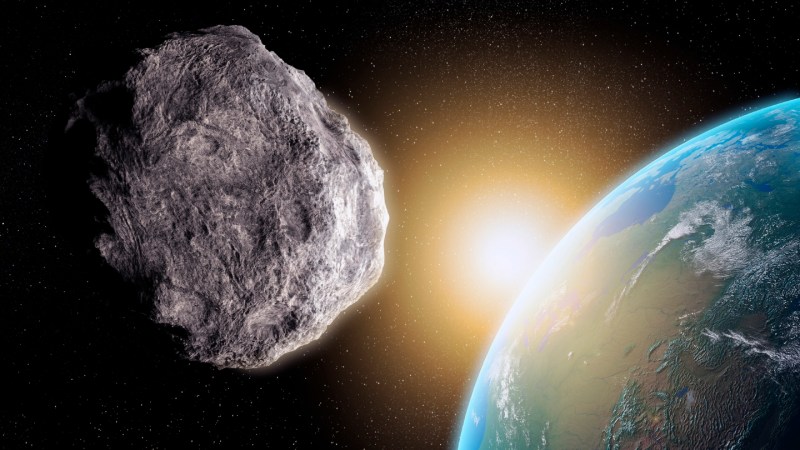
An asteroid heading toward Earth can be deflected without ever touching a spacecraft.
The trick is to use X-rays to deflect the space rock, researchers report Sept. 23 Nature Physics. In laboratory experiments, scientists heated the surfaces of free-falling artificial asteroids with X-ray radiation, producing steam plumes that blew the objects away. Later computer simulations showed that X-rays emitted from a distant nuclear explosion could deflect several asteroids that are roughly as wide as the National Center in Washington, DC, is tall.
“There is only one method that has been proposed that has enough energy to deflect the most threatening asteroids, the largest asteroids, or in some cases even smaller asteroids where the warning time is short, maybe a year or less.” , says physicist Nathan. Moore of Sandia National Laboratories in Albuquerque. “The consensus in the planetary defense community is that X-rays from a nuclear device would be the only option in those scenarios.”
Such explosions would, in theory, occur at safe distances from Earth.
Two years ago, NASA deliberately rammed a spacecraft into the asteroid Dimorphos, changing the space rock’s orbit around a larger asteroid (SN: 26.9.22; SN: 10/11/22). It was a watershed moment for the planetary defense community. But such impacts only work if the asteroid is small and has enough time to change its trajectory, Moore says. So he and colleagues set out to test the defective X-ray noise.
The experiment began in a vacuum chamber that held a simulated cranberry-sized asteroid made of quartz – a mineral made up of the common asteroid component silica. Using the world’s most powerful X-ray generator, the team blasted the chamber in 6.6 nanoseconds. The pulse vaporized the lamellar supports that suspend the quartz, releasing the mineral in free fall. It also heated and vaporized the surface of the falling ore, generating a gas plume.
The expanding plume propelled the quartz like the discharge of a rocket, Moore says, pushing the mineral away from the X-ray source at approximately 250 kilometers per hour. Tests with fused silica gave similar results.
Assessing the viability of the planetary protection scheme requires incorporating experimental results into computer simulations. X-rays from a nuclear explosion several kilometers away can deflect an asteroid of similar composition that is up to 4 kilometers across, the team found.
The researchers hope to perform similar experiments with iron and other asteroid components. “Asteroids come in many flavors, made up of different types of minerals,” he says. “This is just a starting point.”
#Xrays #nuclear #explosions #protect #Earth #asteroids
Image Source : www.sciencenews.org